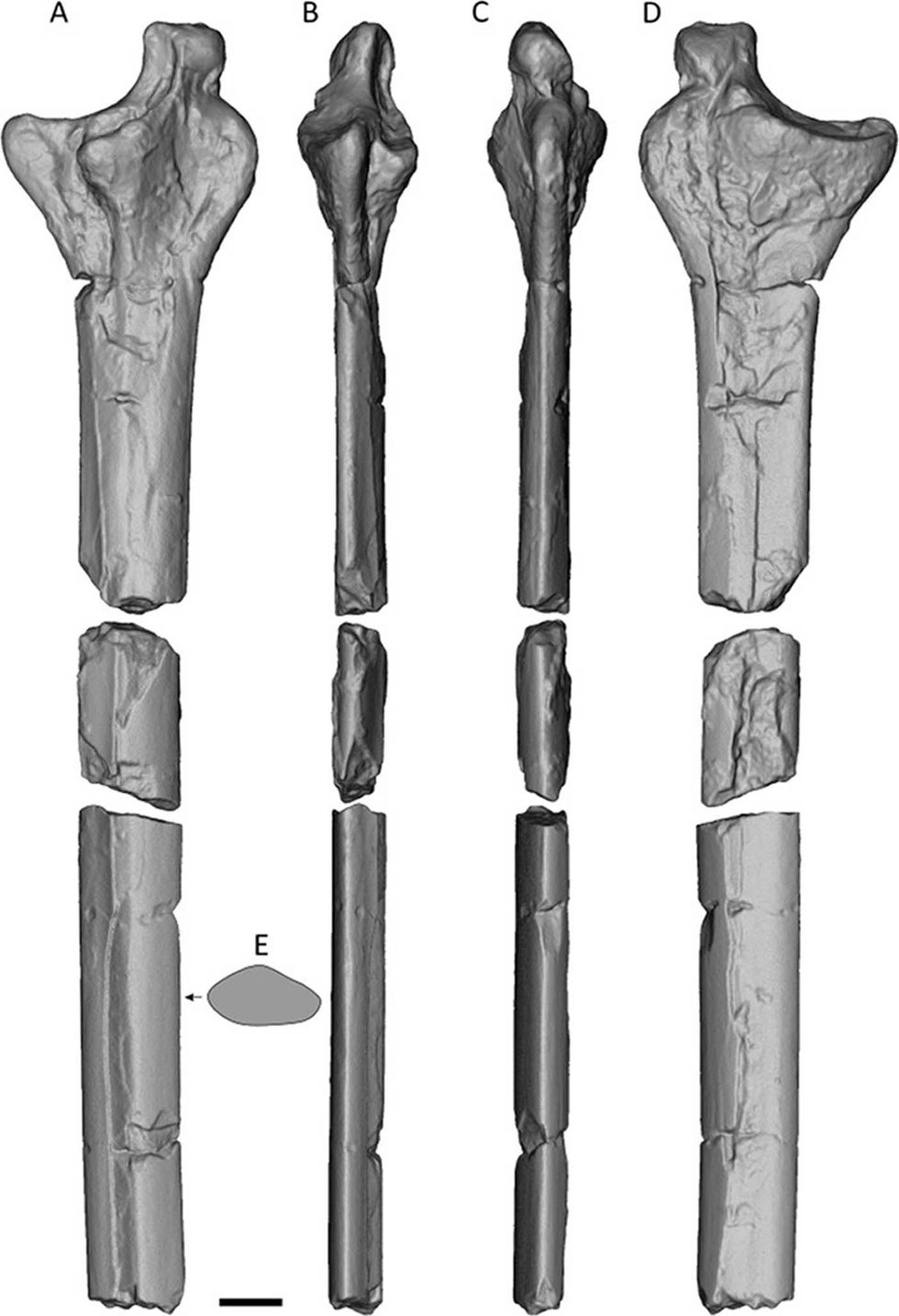
Scientists have nicknamed a gigantic flying reptile from the Jurassic period “Abfab” after a fossilised bone was found in a gravel pit in Abingdon-on-Thames.
The wing bone, which would have belonged to one of the largest pterosaurs found from the Jurassic era, was discovered at the site in Oxfordshire after it was spotted by geologist Dr James Etienne in the quarry floor in June 2022.
Experts from the Universities of Portsmouth and Leicester have examined the bone, which was broken into three pieces but still well-preserved, and identified it as belonging to an adult ctenochasmatoid – a group of pterosaurs known for their long, slender wings, long jaws and fine bristle-like teeth.

Professor David Martill, from the University of Portsmouth, said: “When the bone was discovered, it was certainly notable for its size.
“We carried out a numerical analysis and came up with a maximum wingspan of 3.75m (12ft). Although this would be small for a Cretaceous pterosaur, it’s absolutely huge for a Jurassic one.
“This fossil is also particularly special because it is one of the first records of this type of pterosaur from the Jurassic period in the United Kingdom.”
Pterosaurs from the Triassic and Jurassic periods typically had wingspans of between 1.5m and 2m (5ft-6ft 6in), making them smaller than their later relatives from the Cretaceous period, which had wingspans of up to 10m (33ft).
Prof Martill said the new discovery suggests that Jurassic pterosaurs could grow larger than previously thought.
He said: “This specimen is now one of the largest known pterosaurs from the Jurassic period worldwide, surpassed only by a specimen in Switzerland with an estimated wingspan of up to 5m (16ft).”

The bone was found by Dr Etienne when the Late Jurassic Kimmeridge Clay Formation was temporarily exposed in the floor of the quarry, revealing a number of specimens, including bones from ichthyosaurs and plesiosaurs and other ancient sea creatures including ammonites and bivalves, marine crocodiles and sharks.
Dr Dave Unwin, from the University of Leicester, said: “Abfab, our nickname for the Abingdon pterosaur, shows that pterodactyloids, advanced pterosaurs that completely dominated the Cretaceous, achieved spectacularly large sizes almost immediately after they first appeared in the Middle Jurassic right about the time the dinosaurian ancestors of birds were taking to the air.”
– The scientists’ report has been published in the journal Proceedings of the Geologists’ Association and the fossil is now housed in the Etches Collection in Kimmeridge, Dorset.













